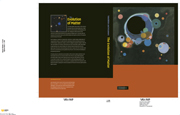Book contents
- Frontmatter
- Contents
- Introduction
- Part I The elements
- 1 Isotopes: weights and abundances
- 2 Introduction to the Universe: the baryonic matter
- 3 Element and isotope abundances: reference collection
- 4 Cosmological nucleosynthesis: production of H and He
- 5 Stellar nucleosynthesis: lower-mass stars and the s-process
- 6 Stellar nucleosynthesis: r- and associated processes
- 7 Timing of stellar nucleosynthesis
- 8 Chemical evolution of the Galaxy
- Part II Early solar system: nebula formation, evolution and lifetime
- Part III Accretion of the Earth
- Part IV Global evolution of the Earth
- References
- Glossary
- Abbreviations
- Meteorites, rocks and minerals
- Index
1 - Isotopes: weights and abundances
Published online by Cambridge University Press: 04 September 2009
- Frontmatter
- Contents
- Introduction
- Part I The elements
- 1 Isotopes: weights and abundances
- 2 Introduction to the Universe: the baryonic matter
- 3 Element and isotope abundances: reference collection
- 4 Cosmological nucleosynthesis: production of H and He
- 5 Stellar nucleosynthesis: lower-mass stars and the s-process
- 6 Stellar nucleosynthesis: r- and associated processes
- 7 Timing of stellar nucleosynthesis
- 8 Chemical evolution of the Galaxy
- Part II Early solar system: nebula formation, evolution and lifetime
- Part III Accretion of the Earth
- Part IV Global evolution of the Earth
- References
- Glossary
- Abbreviations
- Meteorites, rocks and minerals
- Index
Summary
Introduction: nuclei and their behaviour
Atoms are the smallest units of matter that characterize a chemical element. An atom consists of a positively charged core or nucleus and negatively charged electrons orbiting around the core. In nuclear physics, a host of different particles is known to make up atomic cores, but for the purpose of cosmochemistry and geochemistry the simplified model suffices, in which we consider just two kinds of nuclear particles (nucleons): positively charged protons, p, and neutral neutrons, n. For a neutral atom the number of protons in the core, Z (the atomic number), is equal to the number of electrons around it. As Z determines the electron configuration and therefore the chemical behaviour, a family of atoms of equal Z constitutes a chemical element. Such a family generally includes nuclei with a varying number of neutrons, N. The atomic mass number A = Z + N, the total number of nucleons, then varies accordingly. Atoms of an element that have different values of N (and therefore A) are called isotopes, a term with Greek roots indicating that these different nuclides occupy the same position in the periodic table. The lightest element, hydrogen, includes three isotopes, 1H, 2H (D) and 3H, having 0, 1 and 2 neutrons in the core, respectively. Most elements consist of a larger number of isotopes; therefore the approximately 100 currently known elements include approximately 1000 isotopes.
Many isotopes exist indefinitely, at least in normal conditions, and these are known as stable isotopes, S.
- Type
- Chapter
- Information
- The Evolution of MatterFrom the Big Bang to the Present Day, pp. 7 - 18Publisher: Cambridge University PressPrint publication year: 2008

